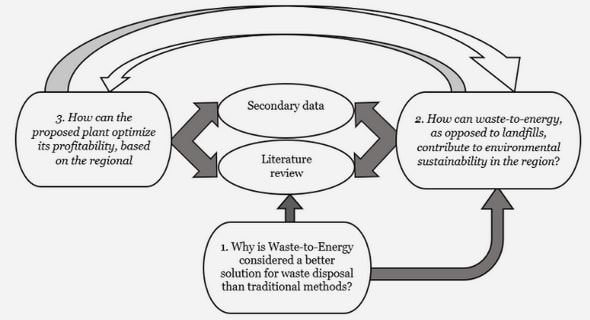Get Complete Project Material File(s) Now! »
Magnetoplasmonic structures to enhance the sensing
Although SPR and LSPR sensors have already shown a high sensitivity, even been commercialized by several companies, there are still great demands of sensors with ultra-high sensitivity for direct de-tection of low concentrations of tiny molecules. For this reason, it would be valuable to improve the sensing performance whilst preserving the advantages of SPR nature. It is well known that modu-lation technique can increase the signal-to-noise ration (SNR) and enhance the detection limits of any kind of sensor [59]. Therefore different modulation methods have been proposed during the last decades to carry out active SPR modulation based on different controlling ways: thermal [60], elec-tric [61] and photonic [62]. In particular, the field called magnetoplasmonics combines magnetic field and SPR to explore new phenomena in material science [1] such as the enhancement of magneto-optical activity in various magnetoplasmonic structures, active control of the propagating of surface plasmons using external magnetic field. The interaction between magnetic field and SPR allows de-vising bio- and chemical sensors, which we call the magnetoplasmonic sensors. They are based on the magneto-optical (MO) activity of the magnetoplasmonic structures, mainly the magneto-optical Kerr effect (MOKE). There are also two kinds of sensors according to the surface plasmon type: MO-SPR sensors and MOLSPR sensors.
Magneto-optical Kerr effect (MOKE)
Magnetoplasmonics are basically magneto-optics because the commonly used materials for plas-monics are silver and gold whose plasmon resonance falls in the range of optical frequencies. There-fore, concepts about the magneto-optics should be discussed beforehand. The modifications of the optical properties of materials induced by magnetic field, i.e. the magneto-optical (MO) effects, were first discovered by M. Faraday in 1845 and J. Kerr in 1878. They observed a change in the polarization state of the transmitted light or reflected light when an external magnetic field was applied to a glass or a ferromagnetic metal, which are called the Faraday effect or Kerr effect, respectively. Ever since then, magneto-optics have been used to develop information storage, as well as optical devices such as modulators, isolators or sensors. Let us take the Kerr effect as the example to introduce the ba-sic concepts in magneto-optics. Under the presence of a magnetic field, the optical constants of an isotropic material becomes non-diagonal, represented by a generalized dielectric tensor:
MOSPR sensors based on magnetoplasmonic thin films
One of the concepts of magnetoplasmonics is involving the control of surface plasmons properties using magnetic field. The magnetic field effects on plasmonic properties were initially analyzed on structures made from degenerate semiconductors, where surface plasmons occur in the far-infrared region. It was shown that depending on the relative orientation of the surface plasmon wave vec-tor and the applied magnetic field, the magnetic field could control properties of surface plasmons such as, for example, propagation or localization. Since then, the magnetic field modulation effects on surface plasmons have found applications in optical isolation, acousto-magnetoplasmonics or plasmon-mediated MO transparency [64, 65]. A recent interest has been stimulated towards ultrafast magnetoplasmonics with hybrid plasmon–ferromagnet thin films systems for the eventual on-chip control of light [66]. One of the most promising application is biosensing and molecule detection. It is worth mentioning that for localized surface plasmons, magnetic modulation effects are too small to be observed in an actual system under moderate strength of magnetic field.
Table of contents :
Acknowledgments
Contents
Résumé en français
Introduction
1 Plasmonic, magnetoplasmonic and nanoporous structures for biosensing applications
1.1 Fundamentals of plasmonics and applications for biosensing
1.1.1 Introduction to surface plasmons
1.1.2 SPPs at metal-dielectric interface
1.1.3 LSPs in nanoparticles
1.2 Magnetoplasmonic structures to enhance the sensing
1.2.1 Magneto-optical Kerr effect (MOKE)
1.2.2 MOSPR sensors based on magnetoplasmonic thin films
1.2.3 MOLSPR sensors based on magnetoplasmonic nanodots
1.3 RIfS in nanoporous structures
1.4 Conclusion
2 Thin-film magnetoplasmonic sensors with tailored magnetic properties
2.1 Nanostructured magnetic layers
2.1.1 Introduction
2.1.2 Multilayers with controlled uni-axial anisotropy
2.2 Magnetoplasmonic sensors
2.2.1 Calculations for thicknesses of individual layers
2.2.2 Sample realization
2.2.3 Magnetic characterization
2.2.4 Magneto-optical SPR (MOSPR) measurements
2.2.4.1 Co sensor
2.2.4.2 Multi-3 sensor
2.2.4.3 Multi-5 sensor
2.2.4.4 Discussion
2.3 Conclusion
3 Plasmonic gold nanoparticles combined with continuous magnetic thin films
3.1 Fabrication of Au nanoparticles
3.2 Plasmonic properties of Au nanoparticles
3.3 Magnetoplasmonic structures based on Au NPs
3.3.1 Protection test
3.3.2 Direct deposition of magnetic layers
3.3.3 Dielectric spacer
3.3.4 Thickness effects of magnetic layers
3.4 Conclusion
4 Nanoporous alumina matrix coated by magnetoplasmonic layers
4.1 Introduction
4.2 Fabrication and structures
4.3 Characterization of samples
4.3.1 VSM measurements
4.3.2 Reflectivity measurements
4.3.3 Kerr effect measurements
4.4 Conclusion
Conclusion
Bibliography


